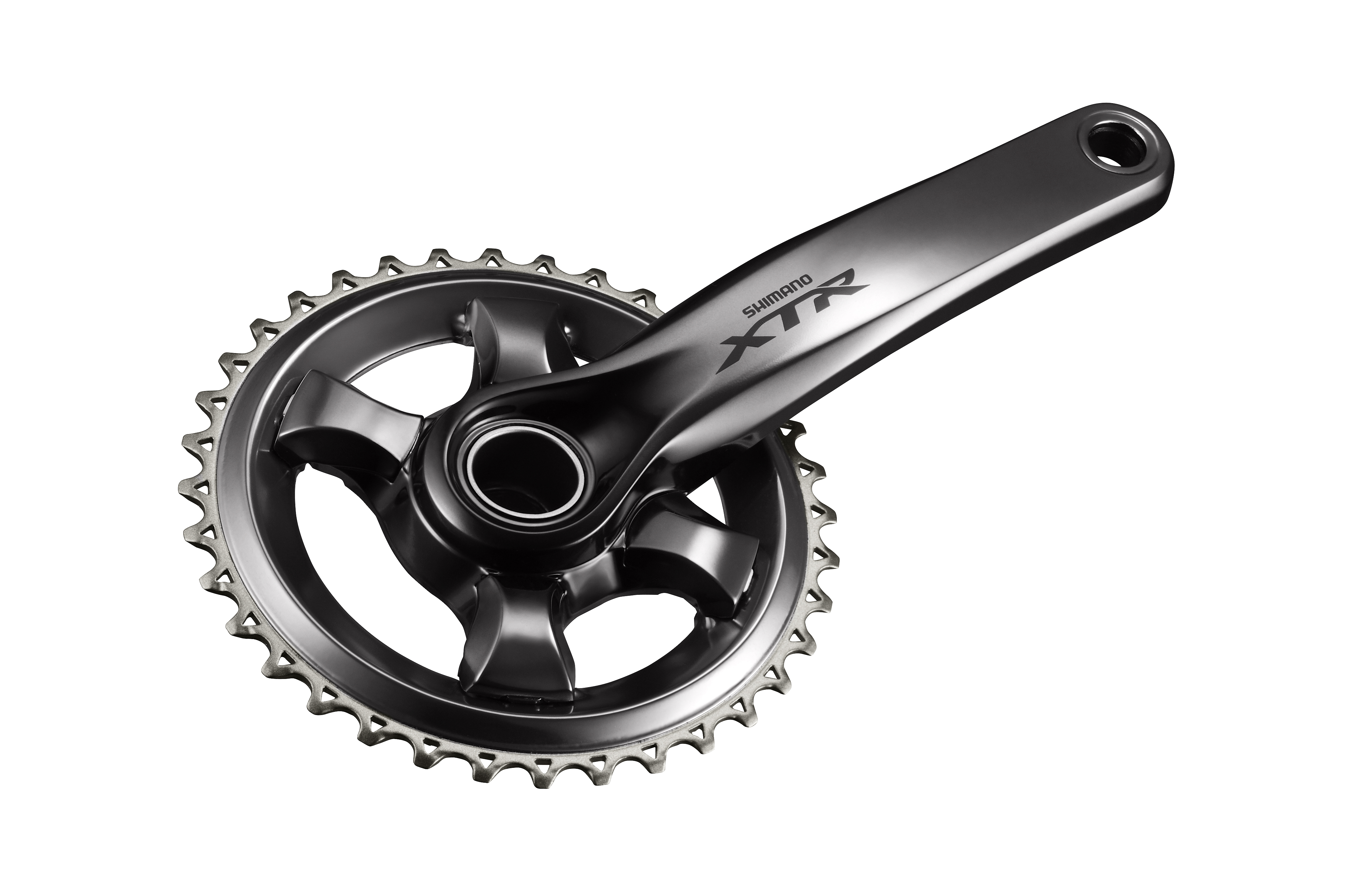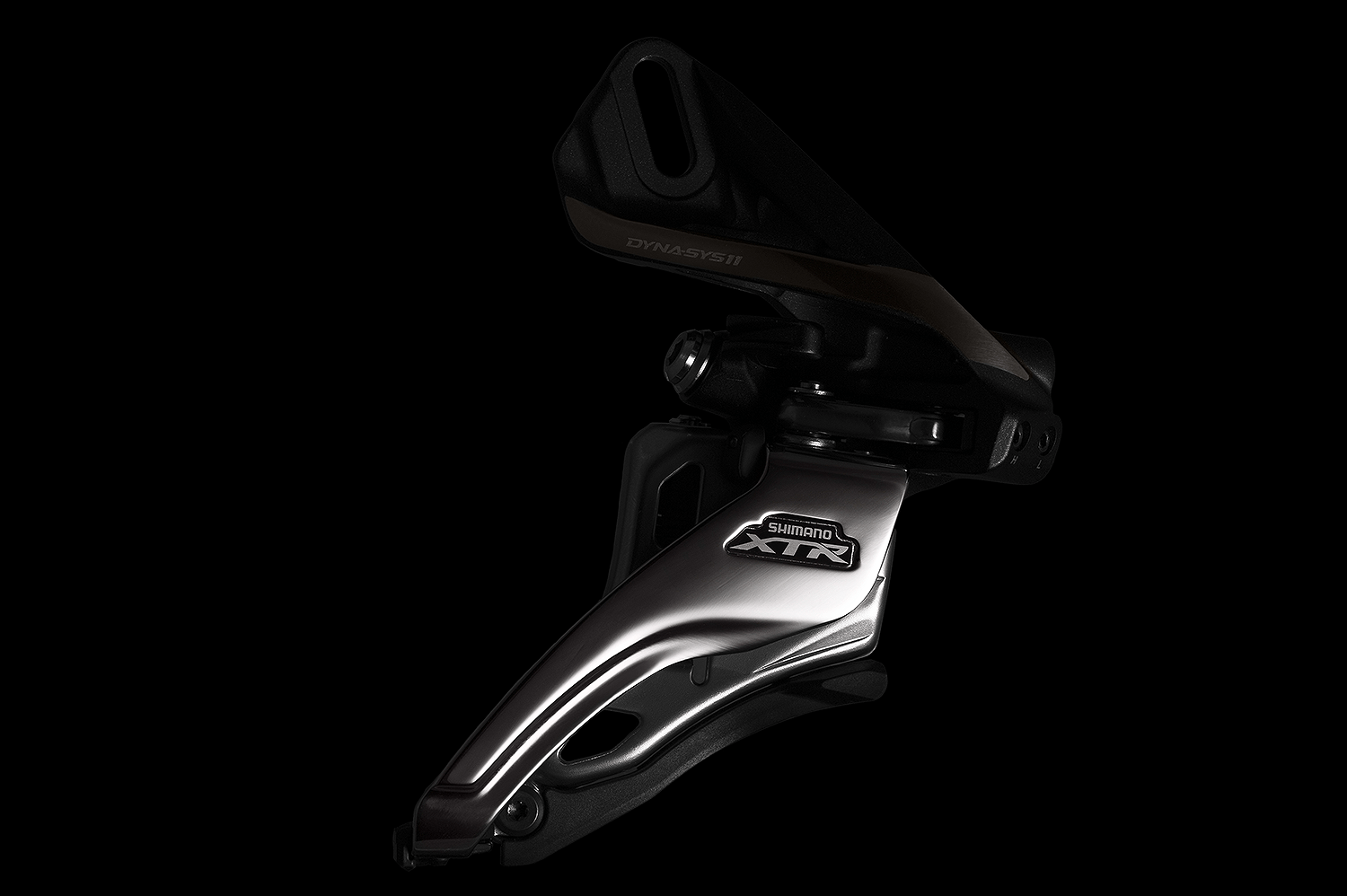Irvine CA: Shimano today introduced new XTR M9000, its most advanced XTR mountain bike components and wheels to date. With this totally new XTR line available in both Race and Trail “Rider Tuned” product families, Shimano leverages its 22 years of engineering leadership producing the industry’s highest performing mountain bike component group. Inspired by the versatility and capability of today’s riders and the terrain they tackle, M9000 offers refined and tested solutions engineered for the way they ride.


Amid all the confetti and “moody” (ie poorly lit) product shots, Shimano launches the new XTR M9000 flagship mtb line. How important is this? This collection of components will define Shimano’s direction in offroad components for the new 3-6 years. Such is the nature of product development, some aspects of the new XTR were decided 3 or more years ago, but doubtlessly a portion of it was a reaction to the most recent trends in the industry. Which is to say, SRAM’s innovative 1×11 concept that they crystalized into their own XX1 debut.
Let’s put all the marketing conceptualization and soft focus glamour shots aside, and get down to how all this is going to affect the industry. Most importantly, Shimano retains faith in the front derailleur. That is to say, Shimano is not committing to 1×11, instead they offer 1x,2x, AND 3x 11sp drivetrains. This is not terribly surprising, since Shimano is truly the undisputed master of front shifting in the realms of both road and mtb components. By offering consumers and OEM the choice of top quality chainring configurations, Shimano is making sure that no money is left on the table due to lack of versatility in product options. In fact, by designing their new 11sp mtb cassette to fit all existing 8/9/10sp mtb hubs, M9000 removes the obstacle of replacing wheels for aftermarket consumers who are looking to upgrade their existing bikes, unlike SRAM’s XX1/X01 which require a special cassette body to fit their 10-42T cogset (in fact, it’s interesting to note that the M9000 11-40T cassette will fit existing hubs whereas the 11sp road cassettes require a wider cassette body). Yet while M9000 will undoubtedly be a paragon of engineering and manufacturing excellence, ultimately it will not have the same impact on frame design that XX1 has had. In the 2014 model year, a number of bikes have already appeared that are optimized for 1×11 drivetrains, or perhaps outright incompatible with 2x or 3x cranks.
Still, maybe this won’t matter since Shimano always makes the best front derailleurs. The new FD-M9000 is a “Side-Swing” design, meaning that the derailleur swings out and forward as it moves the chain to the outer rings, with no vertical vector to cage path at all. Apparently, the new FD-M9000 improves front shifting by “100%”….not 98.5% but a totally not arbitrary 100%. Interestingly, the front shifter cable/housing seems to feed in from the front of the derailleur on at least some of the front derailleur configurations, though I am as yet unsure of all the configurations. For those readers who are neither mechanics nor OEM product managers for bike brands, you should know that there is an utterly ridiculous number of SKUs for mtb front derailleurs due to all the chainring configurations and four different mounts. We’re talking dozens. It is quite possible that OEM will gravitate towards 1×11 just because how it simplifies the front derailleur intricacies.
The M9000 crank will come in narrow Q-factor (158mm) race configuration with a bonded, hollow non-drive crankarm as well as a stouter 168mm Q trail version. As the industry master of cold-forged alloy construction, Shimano once again eschews the use of carbon in the crankarms, but the chainrings incorporate aluminium, carbon, and titanium. The crankarms can accept any version of the highly proprietary M9000 chainrings, available in the following combinations: Single (30T, 32T, 34T, 36T), double (34-24T, 36-26T, 38-28T), triple (40-30-22T). You’ll notice that no chainring is bigger than 40T and there is only one triple chainring combination. Considering that the new M9000 cassette has an 11T cog rather than SRAM XX1’s 10T, the maximum drivetrain ratios are much smaller than they were 10 years ago. Reading between the lines, Shimano basically thinks that (for the high-end of the market at least) the future of 26”-wheels is dead for anything but DH and Freeride, that is to say long travel suspension designs that cannot accommodate 27.5/650B or 29er wheel sizes.
Tomorrow, I’ll discuss the XTR M9000 drivetrain a little more, as well as touch upon the other components.
…We're riding townies, adventure, and mountain bikes. Find recommendations on our store page. As Amazon Associates we earn from qualifying purchases.